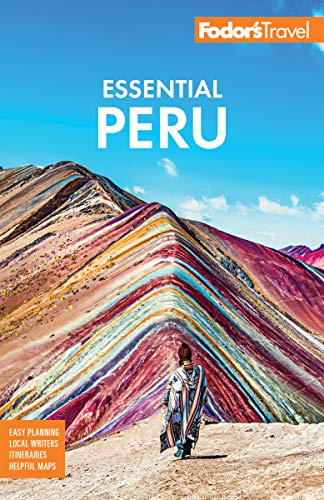Dining
Most smaller restaurants offer a lunchtime menú (also called completo), an incredibly good-value, prix-fixe meal (US$1.50–US$3) that consists of a soup, a main dish, sometimes a simple dessert, and a beverage. Peru is also full of cafés and bakeries, many with a selection of delicious pastries. Food at bars is usually limited to snacks and sandwiches. Make reservations at least three months in advance for Lima's top restaurants.
Meals and Mealtimes
Food in Peru is hearty and wholesome. Thick soups are excellent, particularly chupes made of shrimp or fish with potatoes, corn, peas, onions, garlic, tomato sauce, eggs, cream cheese, milk, and whatever else happens to be in the kitchen. Corvina (a Pacific sea bass) is superb, as is paiche (a fish with a very large mouth that’s found in jungle lakes and is now being farmed sustainably). Adventurous eaters can try piranha—it’s delicious, but full of bones; cebiche, raw fish marinated in lime juice then mixed with onions and ajis (chili peppers), is another option. Anticuchos (marinated beef hearts grilled over charcoal) are a favorite street snack, and pollo a la brasa (rotisserie chicken) is so popular that the government includes it in its inflation figures. Peru's choclo (large-kernel corn) is very good, and it's claimed there are thousands of varieties of potatoes and other tubers, prepared in about as many ways.
Top-notch restaurants serve lunch and dinner, but most Peruvians think of lunch as the main meal, and many restaurants open only at midday. Served between 1 and 3 pm, lunch was once followed by a siesta, though the custom has largely died out. Dinner can be anything from a light snack to another full meal and Peruvians tend to eat it between 7 and 10 pm, although in Lima, this can extend later to 11.
Wines, Beer, and Spirits
Peru's national drink is the pisco sour, made with a type of pale grape brandy called pisco—close to 90 proof—derived from grapes grown in vineyards around Ica, south of Lima. Added to the pisco are lime juice, sugar, bitters, and egg white. It's a refreshing drink and one that nearly every bar in Peru claims to make best. Wines from Ica vineyards include such labels as Santiago Queirolo, Tacama, Taberno, and Ocucaje, but a relative newcomer, Intipalka, is probably the country's best. Ica's National Vintage Festival is in March.
Peruvian beer (cerveza) is also very good. In Lima try Pilsen Callao or sample the products from craft breweries like Candelaria, Sacred Valley Brewing Company, Nuevo Mundo, Cumbres, and Barbarian. In the south it's Arequipeña from Arequipa, Cusqueña from Cusco, and big bottles of San Juan from Iquitos, where the warm climate makes it taste twice as good. In Iquitos locals make Chuchuhuasi from the reddish-brown bark of the canopy tree that grows to 100 feet high in the Amazon rainforest. The bark is soaked for days in aguardiente (a very strong homemade liquor) and is claimed to be a cure-all. In Iquitos, however, it has been bottled and turned into a tasty drink for tourists. Chicha, a low-alcohol corn beer, is still made by hand throughout the highlands. An acquired taste, chicha can be found by walking through any doorway where a red flag is flying, though you may want to sample it at a restaurant to be safe.




